ADCEM
Meningitis epidemics are a major public health issue in subsaharan West Africa and in particular in the "Sahelian Meningitis belt", extending from Senegal to Ethiopia. Today, according to the World Health Organization, 25 to 250 000 people are affected each year by outbreaks of meningitis in this area. Meningitis diseases are due to a combination of various factors: societal factors such as the dynamics of populations or their susceptibility to virulent serotypes, but also climatic factors such as temperature and humidity, or environmental factors such as the spatial distribution of vegetation type. Outbreaks occur from February to April, in the heart of the winter dry season, dominated by hot dry winds from the north (the Harmattan winds) and heavily loaded with mineral dust (aerosols). Aerosols of desert origin but also an excessive dryness of the air have a tendency to destabilize the mucous otho-rhino-laryngology and enable the bacteria (essentially meningococcal serotypes A and W135 ), which many healthy carriers hold, to pass into the blood. Thus, the outbreak and spread of epidemics appear as complex processes involving many factors among which climatic and environmental conditions can play an important role. The question of the evolution of these epidemics in a context of high variability, with regard to the current climate and to climate changes expected in the future, arises.
To answer this question, it is necessary to elucidate the links between climatic conditions and dust concentrations and the spatial and temporal development of epidemics. A major outcome from this study will be investigate these links and to evaluate the capacibility of deterministic dust and meteorological model to provide relevant forecast to be used in the set-up of an early warning system for meningitis epidemics over west Africa.
The objective of the ADCEM project is to adopt an integrated approach, based on statistical methodologies and deterministic modeling, applied to a set of relevant and validated geophysical and epidemiological data set at different spatial (local and regional) and temporal scales.
Béatrice MARTINOCOREA
Researcher at LISA
Beatrice.Marticorena@lisa.u-pec.fr







